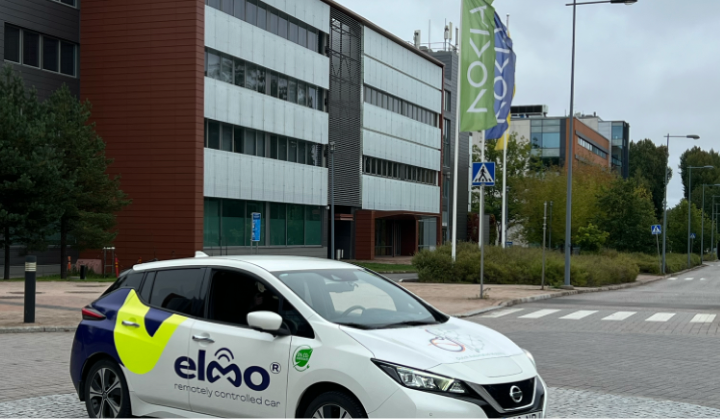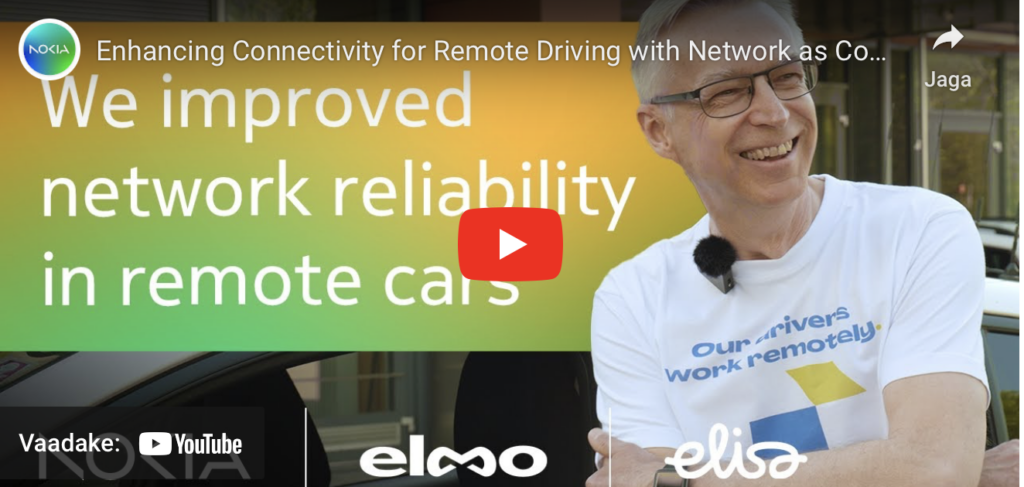Elmo, the Estonian company behind the world’s first road-legal teledriving technology, has achieved a major milestone in remote technology innovation. The Estonian Traffic Department has officially validated Elmo’s AI-powered autonomous braking system, enabling its teledrive technology to operate without a safety driver at higher speeds and without area restrictions. This advancement in driverless mobility further solidifies Elmo’s leadership in the teledriving sector, offering safe, scalable, and robust communication protocols for technology solutions in urban mobility, road safety, and military applications.
Enn Laansoo, Jr., CEO and co-founder of Elmo, commented, “Our team is very happy with technological and regulatory progress we have made in the past year, which allows us now to focus on delivering our solutions to our clients. Our pipeline of clients includes multiple car-sharing operators, road safety, and military players in the EU, including Germany, with further potential expansion into the Middle East and the U.S. Parallel to sales, we’re also advancing AI and machine learning upgrades to ensure an even safer teledriving experience, focusing on both functional safety and operational safety standards.”
“This milestone underscores Elmo’s technological leadership in remote driving technology and strength of its technical resources, capable of efficiently developing road ready driverless AI powered solutions.” stated Ragnar Meitern, Managing Partner of Highgoal Capital, an early investor in Elmo and other fast growing tech companies in the mobility sector, including Bolt. “Their goal-oriented progress and operational experience position Elmo uniquely for large-scale expansion, making them an even more attractive deep-tech company in the transport sector.”

Since launching the first road-legal teledrive service in public car sharing in Estonia and Finland, Elmo has deployed its technology on public roads in Paris, Amsterdam, Berlin, Munich, Hamburg, Helsinki, Zurich, Krakow, Los Angeles etc and soon on Ontario highways. This extensive deployment makes Elmo the most widely tested and applied teledriving solution on the market, showcasing its commitment to regulatory compliance and safety features. Elmo’s remotely controlled 4×4 vehicles are also in active use on the frontlines in Ukraine, supporting crucial operations in challenging conditions.
Elmo has further demonstrated cross-border teledriving with a record 2,500 km journey between teledriver in Croatia and e-car in Finland using 4G and 5G, in partnership with Nokia and Deutsche Telekom‘s Croatian operator Hravtski Telekom. This achievement highlights the potential of human-machine collaboration in long-distance remote vehicle control and operation.

Jürgo Vahtra, Head of the Estonian Traffic Department, praised Elmo’s systematic approach to safety, stating, “Elmo has balanced technology development with practical experience, making their progress safe and reliable. Their AI-driven SOS braking system, performed flawlessly in our tests, which was instrumental in granting approval for driverless high-speed operations”.
Elmo’s technology provides a practical alternative to fully autonomous vehicles, offering the efficiency of teledriving with lower hardware and deployment costs. Richard Woller, Co-Founder & CEO of technology consulting firm schwarzenberg.tech, commented, “Elmo’s combination of regulatory achievement and real-world deployment across sectors based on a smart technology sets the stage for a next era of adaptable mobility services. We believe that tele-operated driving is key in automated mobility and are impressed by the strong and solution-driven team at Elmo.”
With its ongoing fundraising round, Elmo is actively seeking to expand its capabilities and build on its global footprint. The company is planning to enhance its European operations and is considering a launch to enter to Northern American market, potentially introducing technology licensing to car rental, road safety and military companies. This latest approval not only sets the stage for Elmo’s next phase of growth but also presents a compelling opportunity for investors, clients, and cities interested in cutting-edge teledriving technology for a variety of use cases, including driverless taxis and affordable transportation options.
For more information, please visit www.elmoremote.com.
For media inquiries and further information, please contact:
Enn Laansoo Jr.
CEO and Founder
Elmo
Email: enn@elmoremote.com


